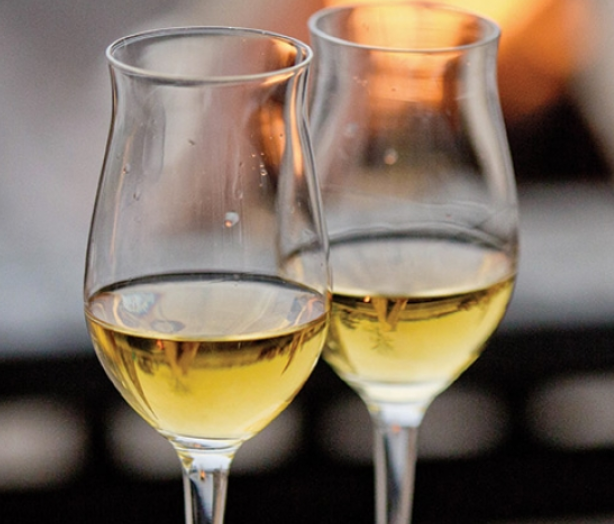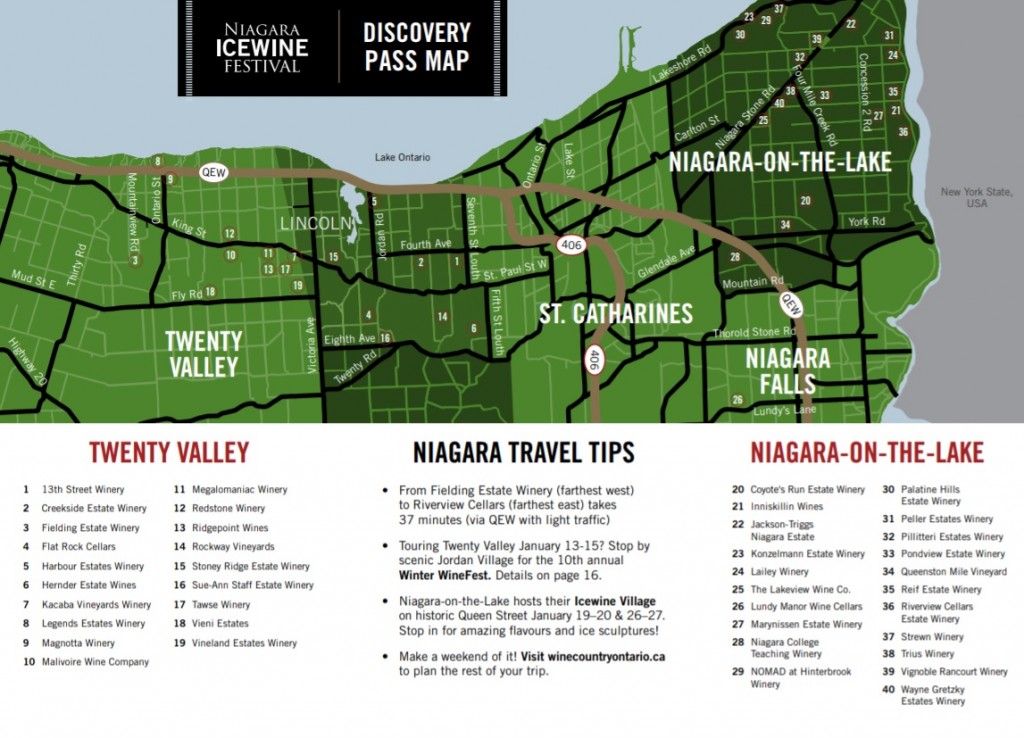For three weekends in January the Niagara region is transformed into wintery wonderland, celebrating one of Canada’s most cherished products, Ontario Icewine.
If you love the great outdoors (and wine), this weekend the 23rd Niagara Icewine Festival is the perfect place to celebrate the upcoming winter season and the incredible Icewine harvest in Niagara along the wine route.
The Niagara Icewine Festival Discovery Pass is your key to three weekends of wine and culinary pairings at wineries across Niagara. Discovery Pass holders can enjoy eight experiences per pass, allowing them to experience the gorgeous wine route while sipping and savouring the best in local icewine, table wines and cuisine.
HOW IT WORKS:
Discovery Pass 101
You buy a Discovery Pass which allows you to access your choice of 8 of the 40 wineries that have created special wine and culinary experiences that celebrate the season.
Use your Discovery Pass Map to plan a route that leaves you plenty of time to learn about the wines in the pairing and taste additional wines while you travel. (see below)
When selecting your winery stops, don’t miss the amazing street festivals in Twenty Valley and Niagara-On-The-Lake. Eight experiences not enough? No problem! All wineries have Discovery Passes for sale, so you can purchase another and split it with a friend.
Icewine Festival Discovery Pass
JANUARY 11–13, 18–20 & 25–27 11AM–5PM
$45 Discovery Pass | $35 Driver’s Pass.
For more information about Discovery Passes go to the link HERE
MAP OF WINE ROUTE
For a list of participating wineries please go to the link HERE.
ABOUT ICEWINE
Icewine is wine made from grapes that have been left to freeze naturally on the vine.
With almost-ideal climate conditions for the reliable annual production of Icewine—warm summers to ripen the grapes and cold (but not too cold) winters—Ontario has produced Icewine since 1984. We’ve been considered a leading Icewine producer on the global stage since 1991, when Inniskillin won the illustrious Grand Prix d’Honneur at Bordeaux’s Vinexpo wine fair.
Today, Ontario is recognized as producing some of the world’s finest Icewine.
What does it taste like?
Icewine is an intensely flavoured wine, boasting rich aromas and flavours of ripe tropical fruits (such as lychee, papaya and pineapple). All varietals are sweet, but with a firm backbone of acidity, making them perfectly balanced.
How do I serve it?
Chill your Icewine first. It’s called a “dessert wine,” which means you can enjoy it with dessert—or make it, alone, the dessert!
Icewine is also a perfect complement to rich, strongly flavoured foods, such as foie gras and aged blue cheeses.
Finally, you can also use it as a “dosage”—try adding a splash to give a new dimension to sparkling wine or cocktails.
How is it made?
In Ontario, Icewine must be made from approved grape varieties; the most popular are Vidal Blanc, Riesling and Cabernet Franc. Some small lots include Gewürztraminer, Chardonnay and Cabernet Sauvignon.
The season starts with netting the grape vines in the autumn, to protect the grapes from being devoured by birds. Grapes are left on the vine until a sustained temperature of -8°C or lower is reached (sometime between December and February). During the time between the end of the growing season and harvest, the grapes dehydrate, concentrating the juices and creating the characteristic complexities of Icewine.
Grape growers and wineries carefully watch the weather, looking for an optimum stretch of temperatures between -10°C and -12°C. This range will produce very sweet juice in the range of 35°Bx to 39°Bx (degrees Brix, a measurement of sugar). Typically, a period of at least six hours is needed to harvest and press the grapes—usually during the night. Many wineries harvest by hand.
While still frozen, the harvested grapes are pressed, leaving most of the water behind as ice. Only a small amount of concentrated juice is extracted. Juice yields for Icewine grapes are much lower than for table wines—only 15% of the expected yield for grapes harvested for table wines. The juice is very sweet and can be difficult to ferment. High sugars can create a hostile environment for the yeast, and fermentation stops early, leaving relatively low alcohol and high sugar levels in the finished wine.
Icewine production is regulated in Ontario under the VQA Act and regulations. Strict standards are monitored by VQA inspectors, from vineyard to the bottle. Rules cover grape varieties, harvest procedures, winemaking and testing before the wine is released. No wine may use the term “Icewine” on its label unless it is certified by VQA Ontario.
To receive similar content, “Like” us on Facebook @ https://www.facebook.com/niagarabuzz.ca










